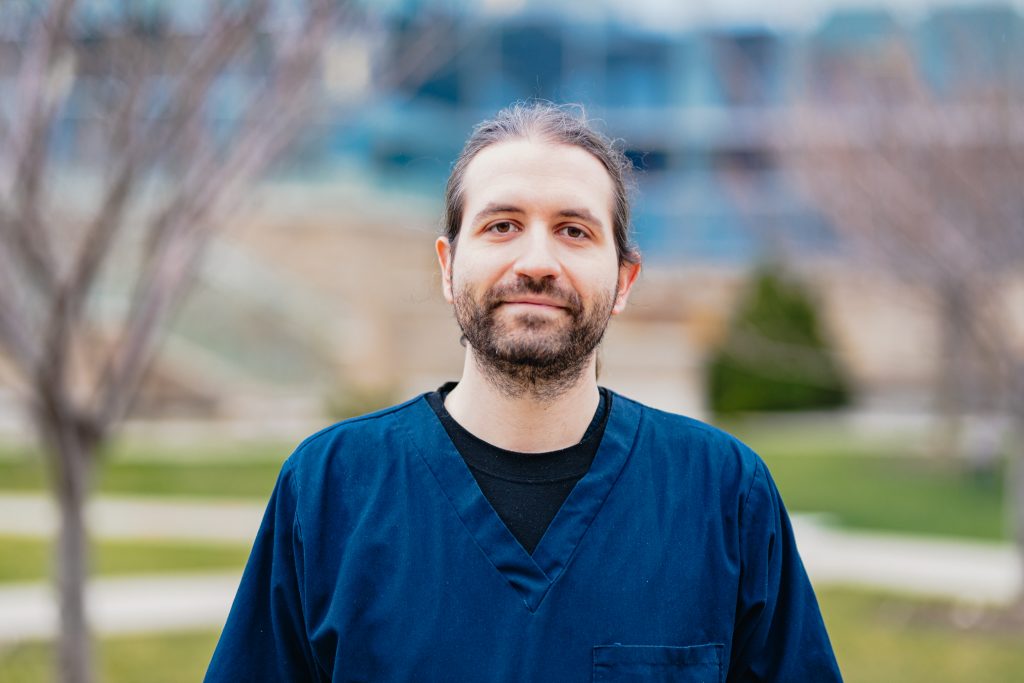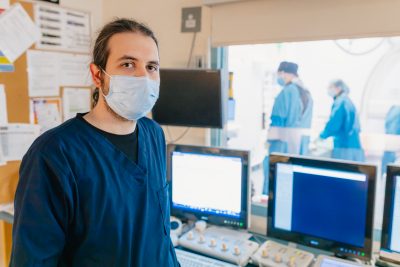
Introducing a Principal Investigator in stroke research
Hamilton Health Sciences (HHS) neurologist Dr. Aristeidis Katsanos is deeply committed to improving outcomes for stroke patients.
“I love neurology, and I’m especially interested in stroke medicine and research,” says Katsanos, who is based at HHS’s Hamilton General Hospital. Katsanos is the principal investigator for a new study that could lead to better outcomes for stroke patients. “Stroke medicine is very challenging, and it’s one of those specialties that’s rapidly evolving.”
“It’s extremely exciting to work in a field that holds so much promise for improved patient outcomes.”
The study is funded by the HHS New Investigator Fund. HHS’s commitment to first-stage research led to the creation of this fund, which provides opportunities to foster and support a culture of inquiry for novice investigators under the mentorship of senior researchers. Project funding supports research directly relevant to HHS’s clinical mission and strategic directions.
Improving a patient’s quality of life after an event is what draws Katsanos to research side of stroke medicine.
DETECTing better outcomes
Katsanos is the principal investigator for an HHS pilot study called DETECT. Principal investigators hold an independent grant, and are the lead researchers for grant projects such as clinical trials. Katsanos is also a co-investigator for other research studies relating to stroke, and treats stroke patients as part of his clinical duties.
A stroke happens when blood stops flowing to the brain, damaging brain cells. The effects of stroke depend on the part of the brain that was injured, and the amount of damage done.
While stroke medicine has advanced a great deal over the years, there’s room to improve outcomes. “With stroke, in one second a person’s life can change forever,” says Katsanos. “These patients don’t often die, but they can be left seriously disabled.”
“We’re at the beginning of the journey with this trial.”

HHS neurologist Dr. Aristeidis Katsanos is principal investigator for a study looking at whether more intensive blood pressure management will improve outcomes for stroke patients.
DETECT is a small-scale trial looking at blood pressure management in stroke following endovascular treatment – a procedure that places catheters inside a blood vessel to unblock it. Even after successful removal of a clot from a blocked brain vessel, nearly half of stroke patients are left with significant disability or they die. Observational studies have shown that the higher the patient’s blood pressure after clot retrieval, the worse the outcomes.
“We want to determine whether more intensive blood pressure management will improve outcomes,” says Katsanos, who is working on the study with co-investigators Drs. Ashkan Shoamanesh, Luciana Catanese, both HHS neurologists, and Dr. Brian Van Adel, an HHS neurointerventionalist.
High blood pressure, also called hypertension, is a major risk factor for stroke. After the clot is removed, blood pressure often returns to normal because blood can once again flow normally. But one in four patients will continue to experience high blood pressure after the clot removal procedure. These are the patients being recruited for the HHS study, which is looking at whether it’s worth exploring further the hypothesis that patients can have improved outcomes due to lower hemorrhage rates by better controlling blood pressure after clot retrieval.
“We’re at the beginning of the journey with this trial,” says Katsanos, whose team has started recruiting patients from across the region. “It’s very exciting to be involved in this type of research at the very early stages.”
Building experience and safety
The study involves a small number of participants and is not expected to prove safety or effectiveness. But its results could be used as a guide for larger studies that determine the best blood pressure target in patients in this situation.
“At this stage we’re building experience, and making sure everything is safe and showing promise before potentially moving to a larger scale study across Canada, and possibly internationally,” says Katsanos.
“It’s extremely exciting to work in a field that holds so much promise for improved patient outcomes.”
